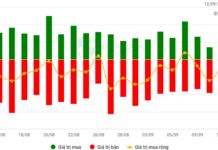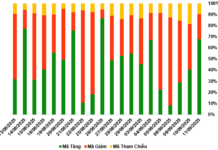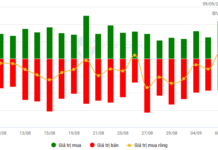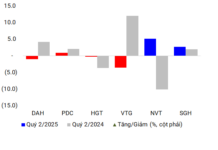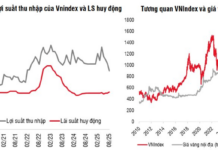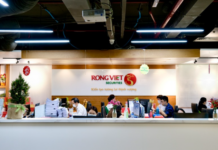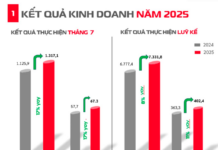Looking back at the landscape of the broken rice market in Ho Chi Minh City over the years, one can see that the “battle” for market share has been fierce. The two famous brands, Kieu Giang and Cali, after a long time of dominating the market and booming development, suddenly declined. As a result, the market is currently dominated by the younger brand – Phuc Loc Tho.
While many people regret that Kieu Giang and Cali are showing signs of being forgotten, the owners of these two brands have just revealed their plans to return to the race.

Kieu Giang, the founder of the Kieu Giang broken rice brand, now cooks at the Tran Quang Khai branch (District 1) after reducing the brand’s chain from 7 to 2 branches. The Song Hanh branch (Thu Duc City) is being developed with the same formula.
For the remaining two branches of Kieu Giang, the customers are mainly long-time regulars.
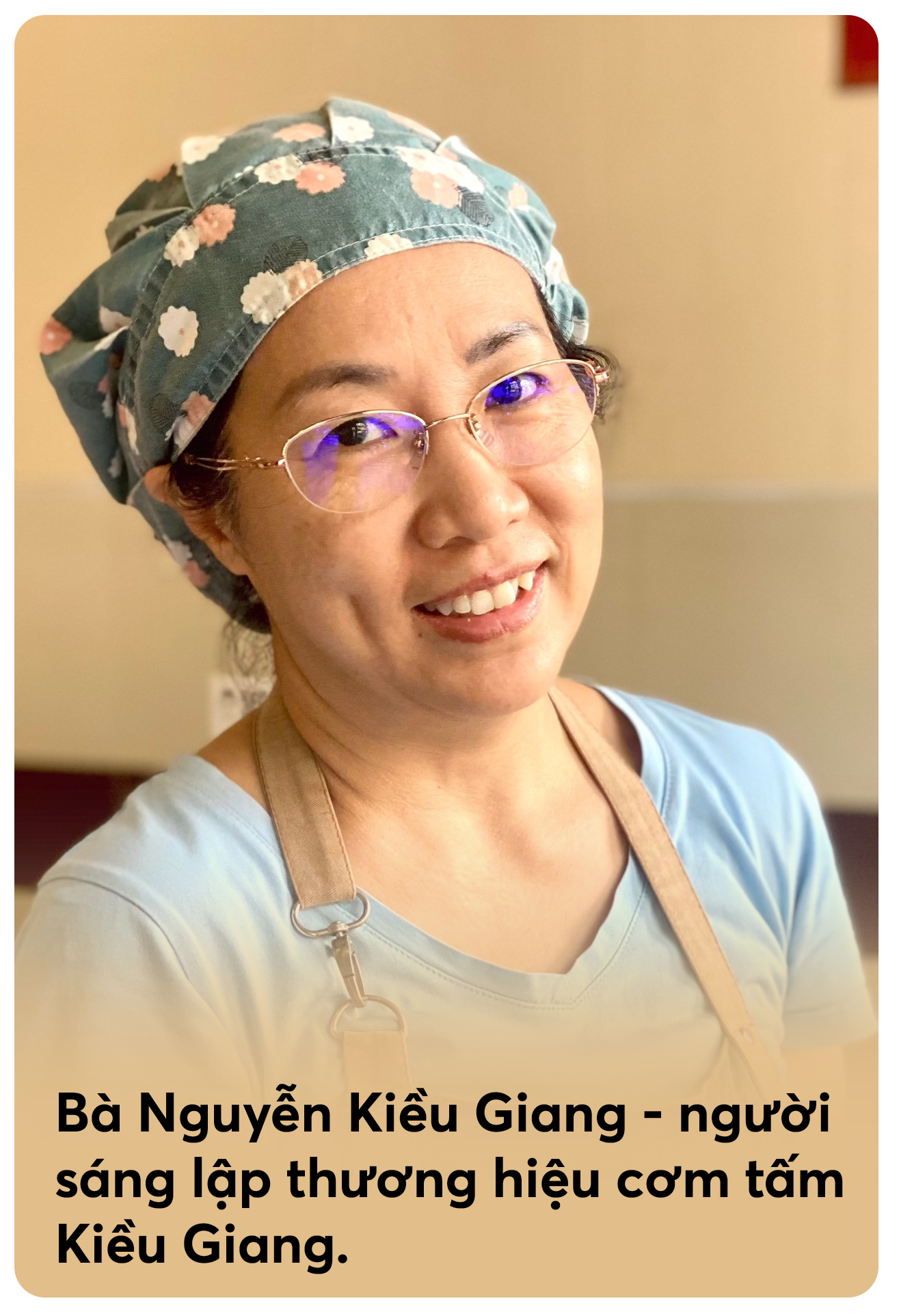
“This branch is almost 1,000 square meters. We will open it in early July, and everything is ready,” said Ms. Kieu Giang.
Returning to the race, the Kieu Giang broken rice brand affirms that it still uses the same seasoning formula as 35 years ago. Only this time, the menu is more diverse, with additional drinks to cater to long-distance customers.
Regarding the price, although it is currently higher than the market, the owner of Kieu Giang still thinks it is reasonable because “you get what you pay for.” In fact, the founder of this brand even thinks that prices can be increased, but “we don’t accept low prices at the expense of quality.”
Ms. Kieu Giang gave an example of choosing the meat for each meal at the restaurant: On a rack of ribs, the restaurant only takes one section and cannot take the whole rack. Each piece of meat and rib on the dishes is carefully selected by the restaurant. The input cost is not low, so it is understandable that the selling price is higher.
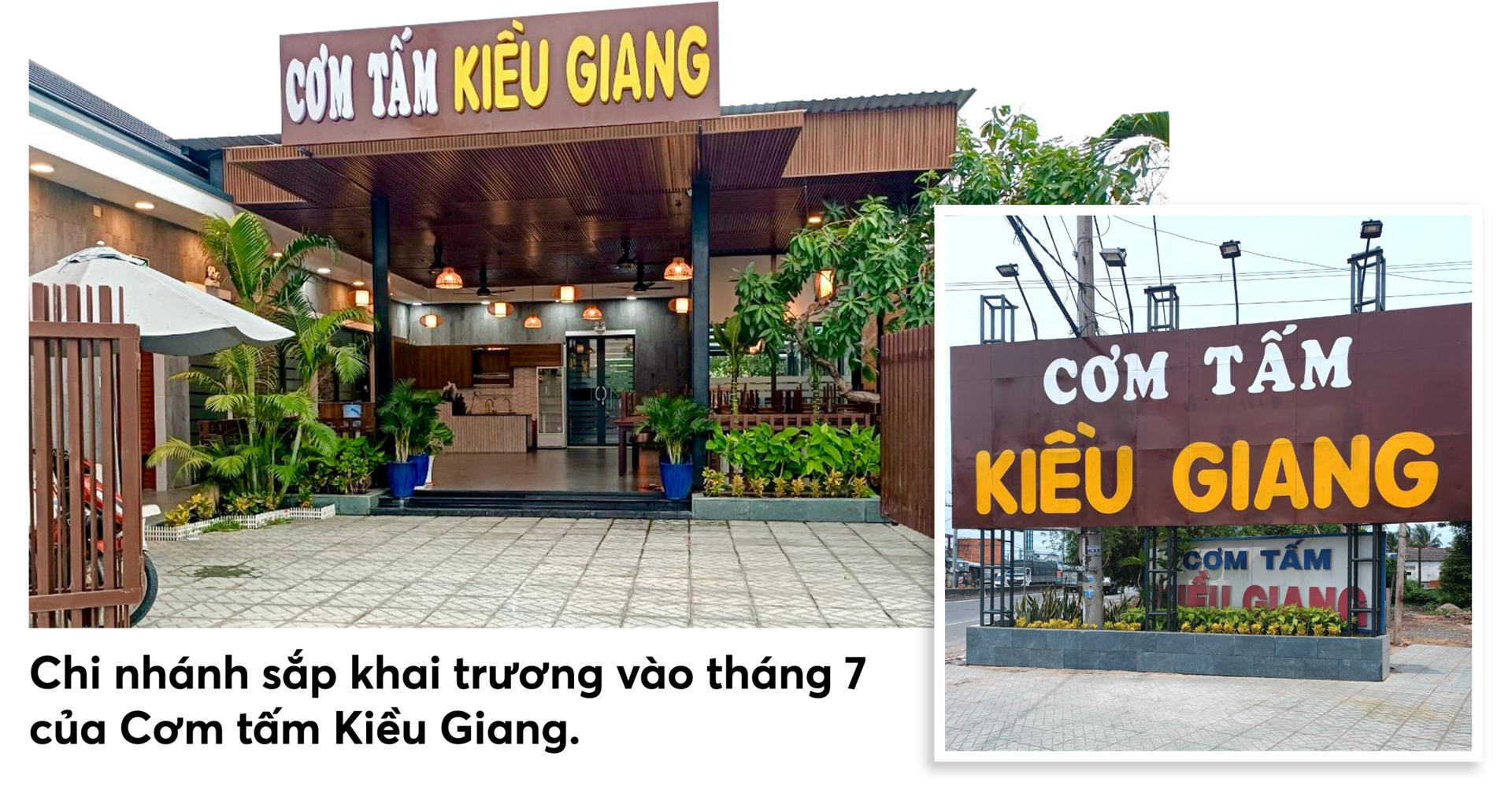
In addition, the target customer group of Kieu Giang is not as general as family restaurants or small eateries.
On this return, Ms. Kieu Giang said she does not put too much emphasis on competition. The 35-year-old broken rice brand just wants people to still remember them and then do their best with all their heart.
“The goal is simply for people to have a decent place to eat and rest while on the road. Of course, profit is necessary, but we won’t compromise our values. Just by putting up a signboard, even before we officially opened, customers have already come to inquire. I am confident that the new branch will do well,” said the founder of the Kieu Giang broken rice brand confidently.
When asked about the reason for closing a series of previous branches, Ms. Kieu Giang did not hesitate to admit that the market competition was too fierce.
In addition to a few brands, there are constantly new family rice restaurants opening with low investment costs and soft prices, giving customers more choices. Meanwhile, for Kieu Giang, the management cost is high, and the revenue cannot keep up, so closing was the only option to minimize losses.

This is the affirmation of Ms. Tran Tieu Linh, the representative of Cali broken rice brand, after discussing with the owner of the brand, who is currently living in the US.
Defined as a chain restaurant model from the beginning, Cali opened its first branch in 2007. Gradually developing, there was a time when a new branch was opened every month. By 2019, Cali had reached 27 branches. However, from the enviable number of 27, Cali now has only 7 branches left.
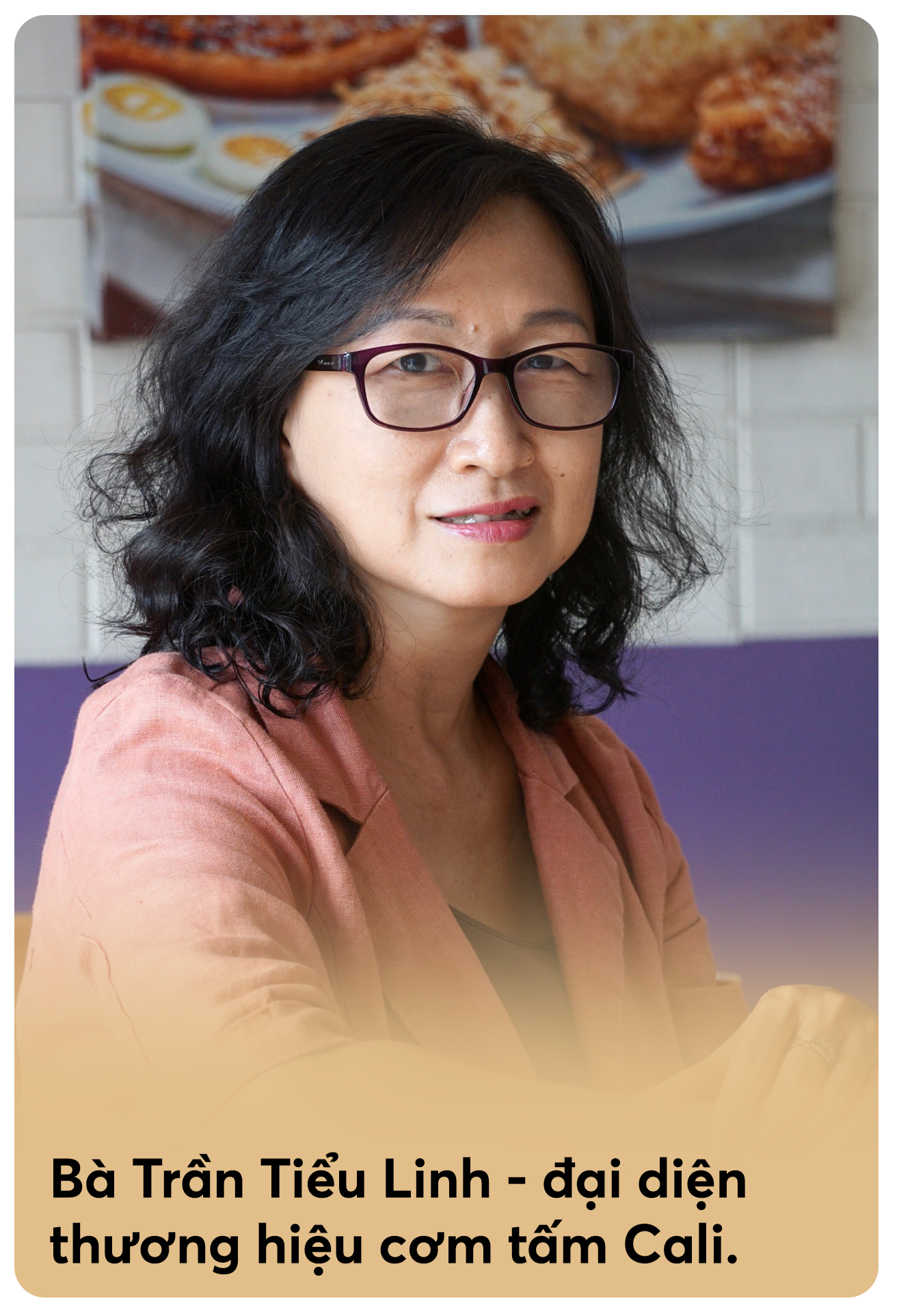
In its 17 years of formation and development, during the glorious development stages, Cali used to receive many offers for franchising from investors. However, worried about the difficulty in controlling the consistent quality across the branches, Cali rejected all these offers.
“If we had accepted franchising, by now, Cali could have been present in more than 10 countries, including the United States. Recently, our old partners proposed again the plan to bring Cali broken rice to Singapore and the US. We are seriously reconsidering this plan,” emphasized the representative of Cali broken rice.
However, that is still a plan for the future. For now, Cali focuses on rebuilding its human resources. By the beginning of next year, when the economy truly recovers and the human resources are stable, Cali will restart its development plan and continue to open new branches.
Also included in the development plan upon restarting is Cali’s orientation towards a delivery model through applications rather than dine-in.
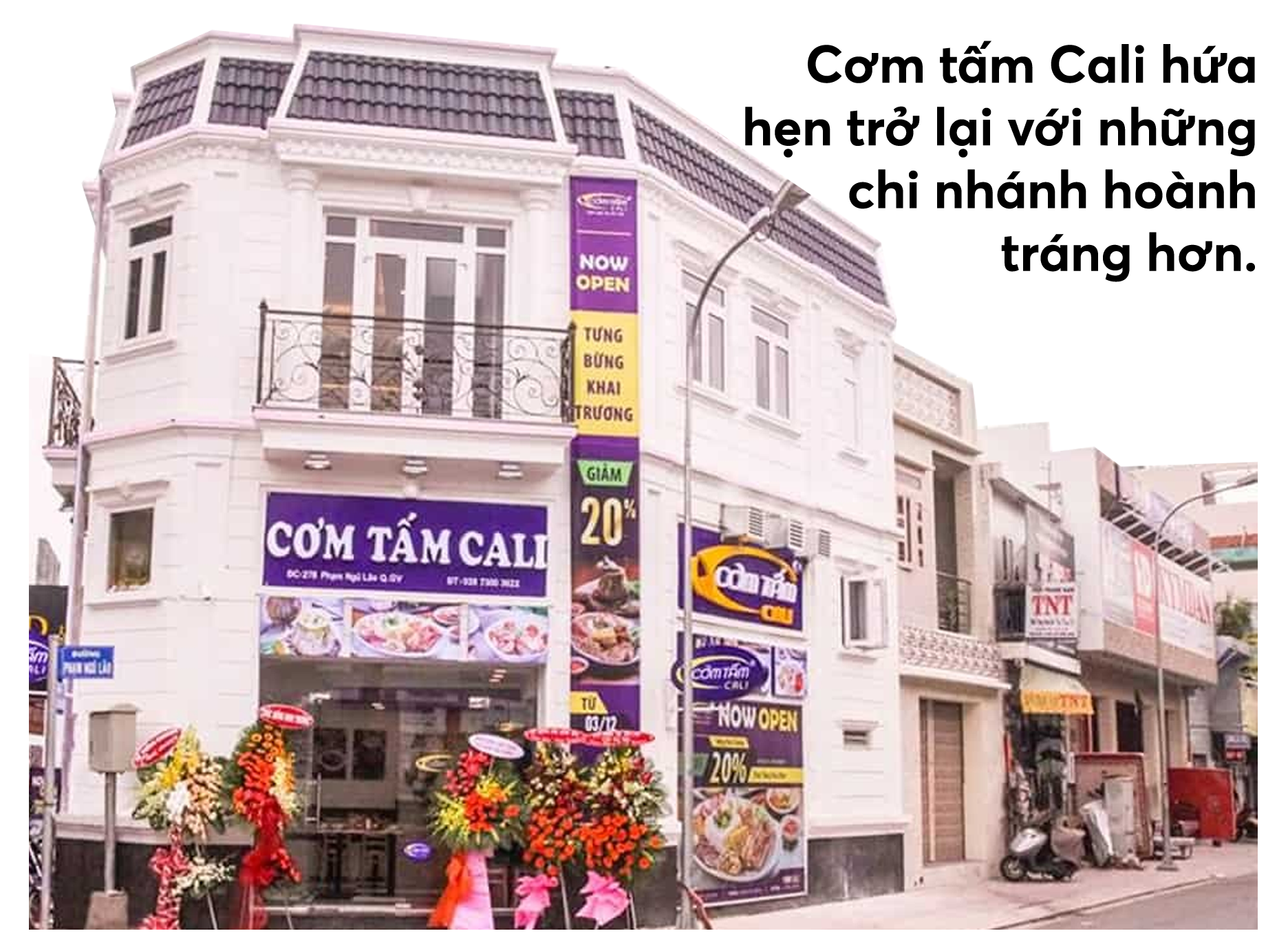
“When we return, we may not only target the Ho Chi Minh City market, but we can also conquer the Hanoi market and neighboring provinces,” said Ms. Tran Tieu Linh.
Currently, there are quite a few well-invested family rice restaurants with professional promotion and operation, no less than the big brands. Cali broken rice believes that this is not only not a concern but also a driving force for the brand’s development.
“There is strength in numbers, and healthy competition will drive the Cali team to continue exploring and developing new dishes. This will enrich broken rice and Vietnamese cuisine. I believe this is a positive sign to preserve traditional Vietnamese dishes on the world culinary map,” said Ms. Tran Tieu Linh.
Regarding the information that some people think that although Cali developed first, it is currently “losing” in the race for market share, Ms. Linh denied this.
According to Ms. Linh, in terms of quality, Cali broken rice, operating as a chain, has always received praise from customers. In terms of finance, the enterprise operates as a family-owned business with self-funded capital and no debt. Therefore, the decision to downsize or expand the system is part of the plan to balance finances.
“The closure of branches is due to the common difficulties in the market and the impact of the economy as a whole. If we look internally, we are confident that we have maintained our performance, and the enterprise is still ‘healthy,'” affirmed the representative of the Cali broken rice brand.

Mr. Hoang Tung, Chairman of F&B Investment, assessed that franchising in the F&B industry in Vietnam is still in its infancy and has a long way to go before reaching its full potential.
In developed countries, franchise revenue contributes 8-10% of the country’s total GDP. For Southeast Asian countries with relatively mature franchise markets, the contribution is about 4%. In Vietnam, this number is less than 1%.
These numbers show that franchising in Vietnam is still very rudimentary and has a lot of potential.

Therefore, the Chairman of F&B Investment believes that Phuc Loc Tho’s goal of opening 100 franchised branches in the next 5 years is too modest compared to the potential of this enterprise. Not only in the domestic market, but he also expects Phuc Loc Tho to bring Vietnamese cuisine to the international arena.
Regarding Cali’s plan to franchise in the US and Singapore markets, Mr. Hoang Tung also assessed that this is “within reach.”
According to Mr. Hoang Tung, the owner of the Cali broken rice brand already has a stable ecosystem in the F&B industry in the US. In fact, the enterprise has even bought the franchise rights to the Phuc Long coffee brand to develop in this country. Therefore, franchising their well-known brand is just a matter of decision.
The only obstacle to replicating broken rice in a completely new market is finding the right ingredients. This is often a common challenge for all Vietnamese dishes.
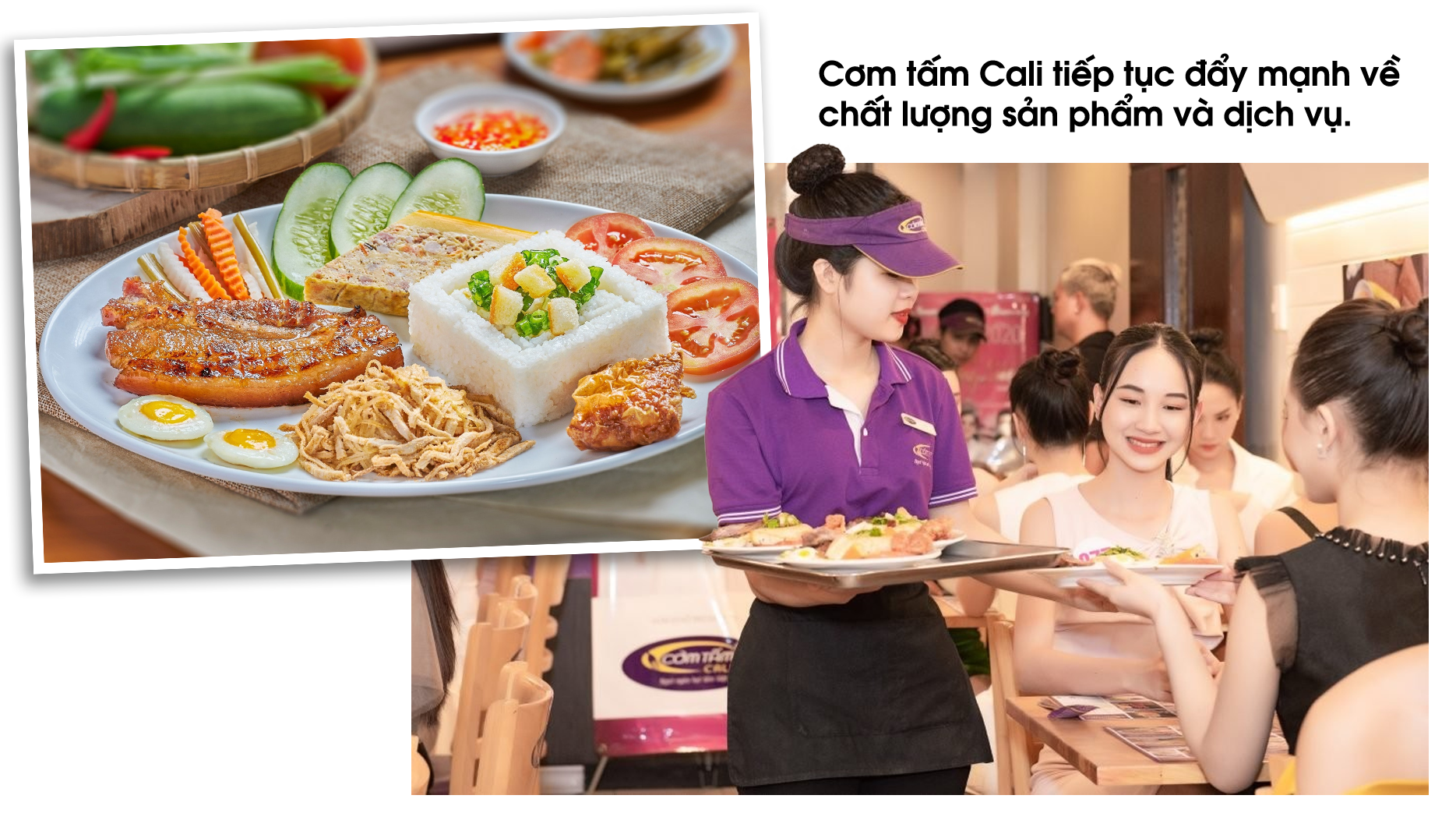
“For example, dishes from the Mekong Delta often include various river vegetables and fruits. These ingredients are readily available in the region, but it’s a different story when it comes to Hanoi. Without the right ingredients, the dish becomes a half-baked version and loses its authentic flavor,” Mr. Hoang Tung illustrated.
However, according to the leader of F&B Investment, the rising logistics industry has solved the equation of supplying ingredients for broken rice to conquer the world. Vietnamese dishes are fully capable of “competing” in any market.
“Whether broken rice can ‘go global’ or not, from a market perspective, it is definitely possible. Now it only depends on the mindset. It seems that brands are still aiming for a sure win in the domestic market before venturing into the international market,” said Mr. Hoang Tung.
2023 Remittances Surpass Half of Ho Chi Minh City’s Budget Revenue
As part of the Homeland Spring 2024 program in Ho Chi Minh City, this morning (2/2), the overseas Vietnamese delegation had a tour of the City Hall and met with city leaders.

